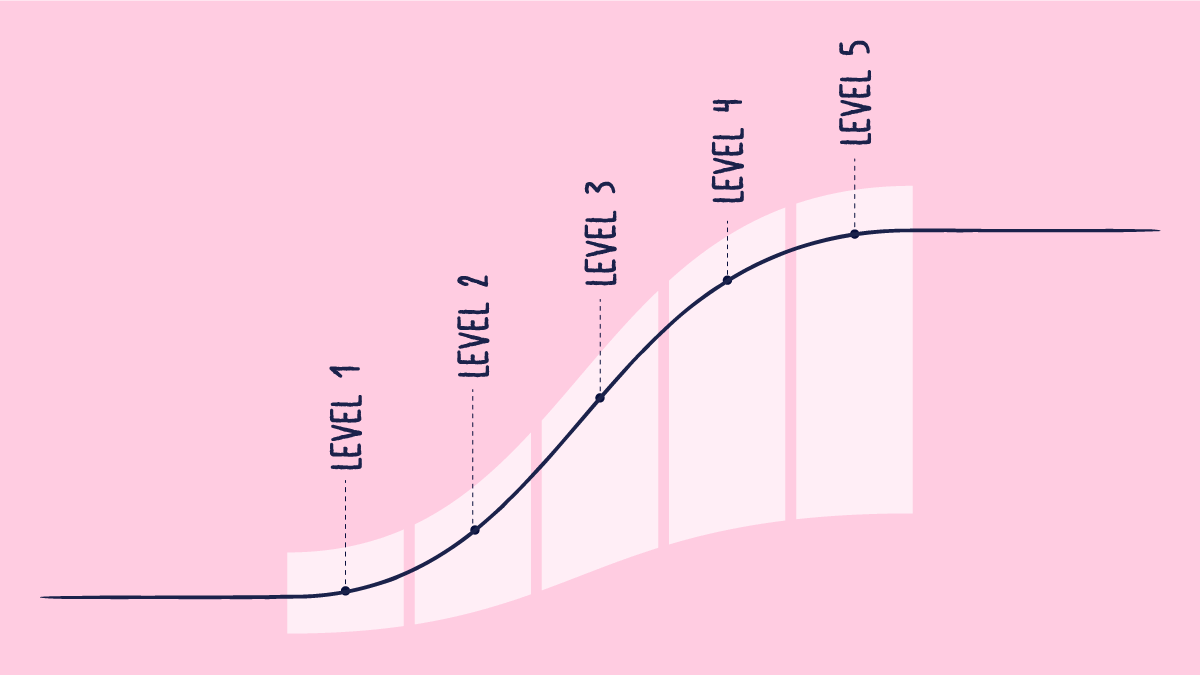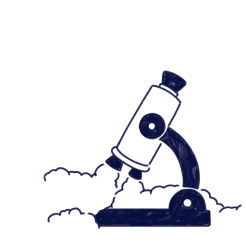
In the pharmaceutical industry, ensuring the safety and quality of medicines is a big responsibility. The U.S. Food and Drug Administration (FDA) and the European Medicines Agency (EMA) are the two most influential regulatory agencies overseeing drug approval and compliance. Their inspections are rigorous, designed to ensure adherence to Good Manufacturing Practices (GMP), and Good Clinical Practices (GCP), and protect public health.
If you’re a pharmaceutical quality professional, you know how vital it is to understand these inspections. While the FDA and EMA share a unified goal, their methods and requirements differ, meaning global organizations must be well-prepared to navigate both. But what if you could decode these processes and ensure seamless compliance, no matter the agency?
In this post, we’ll reveal why FDA and EMA inspections are so essential. We will highlight their similarities and differences, and equip you with practical strategies to excel when being inspected. Whether you’re just starting out or fine-tuning your expertise, this guide is your roadmap to success.
What are the similarities between FDA and EMA inspections?
There is a common mission shared by the FDA and the EMA, which is to ensure the safety and quality of pharmaceutical products. Their shared purpose is evident in their inspection processes, which focus on ensuring the adherence to Good Manufacturing Practices (GMP).
Inspections from both agencies are thorough and meticulous, focusing on key aspects like manufacturing processes, facility standards, and quality control systems.
No matter if you are dealing with an FDA inspector in the United States or an EMA-coordinated inspection team in Europe, you will notice the importance of documentation. Inspectors dive deep into records, meticulously examining evidence from production logs to quality assurance documentation.
Another shared priority is data integrity; both agencies demand complete, consistent, and reliable data to ensure that medicines meet safety and efficacy standards. This consistency offers some level of predictability for global organizations, helping them align their compliance strategies across regions.
What are the similarities and differences between FDA and EMA inspections?
Despite their shared goals, the FDA and EMA have distinct approaches based on their organizational structures and regulatory frameworks.
EMA and FDA inspection phases
Although both agencies have slight differences, their inspection process can be divided into 3 phases: planning and preparation, execution, and follow-up.

Planning and preparation
The inspection process for both agencies typically begins with a planning and preparation phase.
The EMA develops an annual inspection program based on risk assessment, reviewing relevant documentation, and planning inspection strategies. Similarly, the FDA employs a risk-based approach, conducting pre-inspection preparation that includes reviewing the company's history and relevant documentation.
Both agencies prioritize inspections based on risk factors, but the FDA generally conducts routine surveillance inspections every 2-3 years, while the EMA's frequency may vary.
Inspection execution
As for the inspection itself, the FDA starts with presenting credentials and FDA Form 482, officially notifying the facility, whereas EMA inspectors initiate a verbal exchange to outline the purpose, documents, and key people to be involved. Both agencies hold an opening meeting with management and key personnel to discuss the scope, objectives, and logistics before the inspection begins. According to the EMA, the task of an inspector is not limited to the disclosure of faults, deficiencies, and discrepancies. The inspection should normally include educational and motivating elements.
During the inspection, inspectors request documents, tour facilities, examine records, interview staff, observe equipment and activities, and might also collect samples for analysis. Any denied access is documented. Afterward, findings are shared at a closing meeting, with the FDA issuing Form 483 for violations, while EMA reports findings in an inspection report detailing any non-compliance, including manufacturing practices, quality controls, or safety concerns.
Follow-up
Both the FDA and EMA closely monitor the implementation of corrective actions to ensure that identified issues are fully addressed.
While both agencies may request evidence of corrective measures, the FDA takes a more proactive approach with follow-up inspections. These inspections verify that the necessary actions have been taken and compliance has been achieved after previous violations, helping to prevent further non-compliance.
The FDA expects manufacturers to respond to FDA Form 483. The same applies to EMA inspectors regarding the Inspection Report. If corrective actions are not implemented, both the FDA and EMA can escalate the situation.
The FDA may issue a warning letter or take enforcement action, which can include penalties or even product recalls. If the situation remains unresolved, further inspections will be conducted to ensure compliance.
Similarly, the EMA may require additional follow-up inspections and, if non-compliance persists, could recommend sanctions or market restrictions, ensuring the company addresses the issues to meet regulatory standards.
Recommended learning: Get top tips to prepare for an FDA inspection and build an inspection-ready QMS!
Other similarities and differences in the inspection process

The FDA operates as a centralized authority, providing uniformity in its procedures and enforcement. This provides a clear and predictable regulatory framework. In contrast, the EMA works in collaboration with national competent authorities in EU member states, which can result in variations in inspection practices.
This difference in jurisdiction may present unique challenges for pharmaceutical companies, such as different expectations from inspectors, linguistic barriers, and cultural differences, which may require careful planning and adaptation.
On the one hand, the FDA conducts a wide range of inspections with varying focus and scope, reflecting its risk-based regulatory approach such as:
- Surveillance inspections: ensure compliance with quality manufacturing practices and assess product quality in the market.
- For-cause inspections: address specific concerns such as quality issues or complaints.
- Application-based inspections: verify the compliance and manufacturing readiness of facilities involved in producing new drugs, devices, or biologics as part of the approval process.
- Follow-up inspections: confirm corrective actions after previous violations. Through these inspections, the FDA evaluates both domestic and international facilities, prioritizing efforts based on potential risks.
In contrast, the EMA’s inspection process is decentralized, with national competent authorities (NCAs) in EU member states conducting inspections. These inspections focus on GMP, GCP, and GVP compliance, ensuring the safety, efficacy, and proper monitoring of medicinal products. The EMA collaborates with the Pharmaceutical Inspection Co-operation Scheme (PIC/S) to ensure GMP alignment internationally, sharing training resources, inspection activities, and developing common guidance.
This partnership helps streamline GMP inspections, avoid duplication, and maintain high-quality standards across regions. The EMA also assists in assessing the GMP equivalence of new member authorities and supports the exchange of inspection information.
Unlike the FDA, inspections vary depending on the NCA involved. The EMA also integrates findings from multiple NCAs to ensure comprehensive compliance across the EU. This decentralized approach can result in differences in inspection practices between member states.
Another notable difference is how these agencies communicate their inspection findings. An FDA inspection typically concludes with a detailed written list of observations, known as Form 483. This document outlines any areas of non-compliance and provides companies with a clear roadmap for corrective actions.
The FDA classifies inspection findings into three categories: No Action Indicated (NAI), Voluntary Action Indicated (VAI), and Official Action Indicated (OAI), which can be tracked via the FDA Data Dashboard.
In contrast, the EMA places a greater emphasis on compliance with European regulations, conducting inspections based on specific product concerns or compliance verification.
The FDA’s inspection process is typically more stringent, with a focus on risk-based evaluations and immediate consequences for non-compliance. On the other hand, the EMA often adopts a more collaborative approach, providing guidance and support to companies. Observations are often discussed verbally during a closing meeting, with a formal report issued later.
This divergence in communication styles requires companies to adapt their response strategies accordingly.
Regarding penalties, the FDA and EMA have the authority to take decisive regulatory actions to protect public health. The FDA can halt drug production by enforcing cGMP compliance through court orders, seizures, or injunctions. Similarly, the EMA can recommend suspensions of marketing authorizations or licenses for medicines that fail to meet safety, quality, or compliance standards, often working in coordination with national regulatory agencies.
As a final point, different agencies conduct audits at different frequencies, which may influence how companies prepare for audits. The FDA tends to conduct inspections more regularly, especially for high-risk facilities, and may even carry out unannounced inspections as part of its risk-based approach. This often results in a more proactive and stringent preparation process, as companies must be ready for audits at any time.
In contrast, the EMA's inspection frequency can vary depending on the specific country’s regulatory body and the nature of the product being assessed. Since EMA inspections may be less predictable, companies must prepare for audits in a way that ensures continuous compliance, knowing that inspections might focus on a particular product or issue.
Consequently, the varying inspection schedules and requirements mean that companies need to be consistently vigilant in maintaining regulatory standards to ensure a smooth audit experience with either agency.
Understanding these differences is not just theoretical; it is essential for quality professionals to navigate these regulatory landscapes.
FDA and EMA collaboration
While the FDA and EMA operate independently, there is growing collaboration between the two agencies, particularly in the area of inspections.
To streamline the regulatory process and reduce the burden on pharmaceutical companies, the FDA and EMA have established Mutual Recognition Agreements (MRAs) with several countries.
What is the Mutual Recognition Agreement
The Mutual Recognition Agreement (MRA) between the FDA and the European Union (EU), formalized in 2019, was a significant milestone in regulatory collaboration. It allows both parties to recognize each other’s inspections, ensuring compliance with Good Manufacturing Practices (GMP) without the need for duplicate inspections.
Essentially, this means that if the FDA inspects a facility in the U.S. or abroad, the EU accepts its findings, and vice versa. Exceptionally, both the EU and FDA reserve the right to inspect each other's territory at any time.
Additionally, both agencies share information on emerging safety concerns, product quality issues, and new regulatory trends, ensuring that inspections remain aligned with the latest industry standards.
This agreement reflects a shared commitment to streamlining regulatory processes, helping companies save time and resources while maintaining high compliance standards. It ultimately supports the goal of ensuring drug safety and efficacy worldwide.
Despite its broad scope, certain exclusions remain in place under the MRA. These exclusions currently cover products such as human blood, plasma, tissues, and organs, as well as investigational products like clinical trial materials.
On May 31, 2023, the FDA and the EMA announced their decision to expand the scope of the MRA to include inspections of veterinary pharmaceuticals.
Additionally, vaccines for human use and plasma-derived pharmaceuticals, while recognized as critical areas, are not yet included in the agreement. Both the FDA and the EU acknowledge the importance of these categories and have initiated discussions to evaluate the possibility of expanding the MRA to cover them.
The potential inclusion of vaccines and plasma-derived pharmaceuticals is a complex issue that requires a thorough assessment.
As part of this ongoing evaluation, the FDA has announced that it will revisit the possibility of expanding the MRA’s scope in July 2025. This future assessment will consider advancements in regulatory frameworks, inspection harmonization, and the practical implications of such an expansion. If implemented, this extension could further strengthen the MRA’s impact on ensuring the quality, safety, and efficacy of medicines globally.
Why is the Mutual Recognition Agreement important?
The MRA streamlines regulatory oversight, eliminating the need for duplicate inspections. This not only saves time and resources but also allows both agencies to focus their inspection capacity on facilities in other parts of the world, improving global quality oversight.
As part of the agreement, EU pharmaceutical companies are not required to repeat batch testing on medicines imported from the United States, as long as the tests have already been conducted in accordance with U.S. requirements.
Other collaborations between the FDA and EMA
Beyond the MRA, the FDA and EMA collaborate in other ways to streamline the inspection process.
For instance, both agencies share critical information related to drug safety, adverse events, product recalls, and manufacturing issues. By exchanging inspection reports, findings, and safety data, they can coordinate efforts to identify and address global pharmaceutical concerns more effectively.
Both agencies actively participate in international forums such as the International Council for Harmonisation of Technical Requirements for Pharmaceuticals for Human Use (ICH).
Through these collaborations, the FDA and EMA work together to harmonize regulatory standards and inspection practices, which can lead to more consistent global compliance expectations.
Scilife tips: Best practices for navigating FDA and EMA inspections
Successfully navigating FDA and EMA inspections requires strategic preparation and a proactive approach.
Here are some tips and key considerations to succeed in FDA and EMA inspections.
Always be inspection-ready: To be successful don’t just prepare for incoming inspections. Be always ready. The secret is operating in a continuous state of compliance and readiness. Be ready to embed quality into daily operations. Every action, record, and decision must align with regulatory standards as a matter of routine.
Document everything thoroughly: For both FDA and EMA inspections, comprehensive documentation is non-negotiable. Remember, if it’s not documented, it didn’t happen. Keep meticulous records of your processes, quality checks, and corrective actions to demonstrate compliance.
Use technology to create a robust Quality Management System: Build a quality framework that ensures you meet all regulatory standards. To stay competitive and effective, consider using an electronic Quality Management System (eQMS). This system includes tools to track, monitor, and report quality data, making it easier to stay on top of compliance. It’s also important to enable employees to collaborate and share feedback through the system, which fosters improvement and teamwork.
Develop a detailed inspection list: Create a detailed inspection list that covers everything inspectors might review, including facility walkthroughs, document checks, and regulatory requirements. Use insights from past inspections to fine-tune the list, ensuring it addresses all critical areas for a smooth inspection process.
Conduct regular internal audits and mock inspections: Regularly conduct internal audits and mock inspections to spot and fix potential issues before an actual inspection. Involve all teams in these exercises to ensure everyone is prepared and aligned across departments.
Form an expert inspection response team: Form a dedicated team of subject matter experts to manage the inspection process. Include representatives from key departments like quality, regulatory affairs, and manufacturing. Take the time to ensure each team member understands their role and responsibilities for a smooth and efficient inspection.
Make your documentation accessible: Ensure all relevant documentation is well-organized and easily accessible during an inspection. This includes SOPs, batch records, testing protocols, and quality records. Having everything ready not only speeds up the inspection process but also shows transparency and preparedness.
Maintain open communication with inspectors: Build a collaborative and transparent relationship with inspectors by addressing their questions promptly and clearly. Be prepared, cooperative, and respectful throughout the process. Answer all inspector questions honestly, but don’t hesitate to say, “I don’t know, let me find out.” It’s far better to follow up with accurate information than to guess or provide incomplete answers.
A friendly and cooperative attitude can go a long way in positively influencing the inspection outcome. A best practice is to assign at least two team members to accompany inspectors during the entire process. One can focus on answering questions and retrieving materials, while the other takes notes on inspector comments and areas of focus.
Organize duplicate documents and samples: When providing documents or product samples to inspectors, always keep duplicates for your records. Ensure these are properly labeled with the date and relevant batch information for easy traceability.
Label materials as confidential: Stamp all documents shared with inspectors as “confidential.” This practice helps protect sensitive company information and reduces the risk of unintended disclosures.
Work on continuous improvement: Implement a culture of continuous improvement. Regularly assess and enhance processes based on internal audits, corrective and preventive actions (CAPA), and lessons learned from previous inspections. They are invaluable for identifying and addressing potential compliance issues before regulators arrive.
Conclusion
Getting through FDA and EMA inspections can be challenging, but understanding their similarities and differences can make the process much smoother. Both agencies work toward the same goal: ensuring medicines are safe and effective. However, their inspection methods and expectations differ, which means companies need to adjust their strategies accordingly.
Key takeaways:
- Shared mission, different paths
FDA and EMA are focused on maintaining high standards for pharmaceutical products, but their approaches reflect their unique structures and regions. - Thorough and detail-oriented
FDA and EMA inspections are comprehensive, covering everything from facility standards to meticulous document reviews. Both place a high value on accuracy and transparency. - Risk-based prioritization
Both agencies base their inspections on risk, but the FDA tends to inspect more frequently, while EMA inspections often depend on specific circumstances or concerns. - Collaboration across borders
The Mutual Recognition Agreement (MRA) between the FDA and EMA helps reduce duplicate inspections, saving time and resources while ensuring high standards. - Preparation pays off
A strong quality management system, regular internal checks, and organized documentation with an eQMS are essential for making inspections smoother and more efficient.
At Scilife, we’re here to help make inspections less stressful and more manageable. Our easy-to-use eQMS ensures your documentation is organized, your processes are streamlined, and your team is always ready for an inspection.






